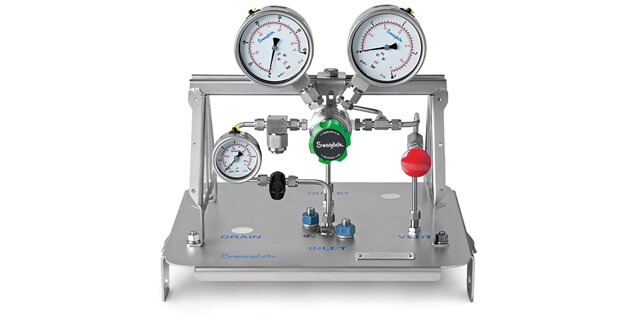Which Pressure Gauge Do I Need?
Which Pressure Gauge Do I Need?
Written December 2019 | Swagelok GA Engineering Team
With the many different options available for gauge pressure ranges, it can be difficult to know what pressure range to use in a specific system. There are a few factors in the way gauges work that can help us to make the best decision.
One thing to consider is that many gauges use what is called a bourdon tube. This tube is curved into an arch and sealed closed on one end. The other end is open to the system pressure and secured to the gauge housing. The pressure in the tube causes it to flex more for higher pressures and less for lower pressures. This motion is passed through gears to the dial pointer, giving you your gauge reading.
For the gauge to be sensitive and accurate, it is calibrated at the factory. One key feature is that the tube is thicker for high pressure and therefore less flexible. It is thinner for lower pressure ranges and therefore more flexible. The more flexible the gauge the more sensitive it is to changes. Another consideration is that the tube does not flex evenly throughout its entire range. Because of this, the gauge must be designed to be most accurate in one general pressure range. Most gauges are going to be less accurate on the lowest end and the highest end, while the middle third of the pressure range will be the most accurate and sensitive.
One final consideration is that if your system is operating very near the top pressure range of a gauge, any pressure spikes will likely damage the gauge, or at least impact its calibration. I have seen some gauges with bent indicator arms where it rotated past the 0 mark again. Should you then select a much higher-pressure gauge to avoid this? No, because it will be much less sensitive.
Selecting a gauge that is roughly double your expected operating conditions ensures that:
- Your system pressure will be right in the middle of the gauge, where it is most accurate
- You will select a gauge that is as sensitive as possible for your pressure range
- Any system pressure changes are less likely to damage your gauges

